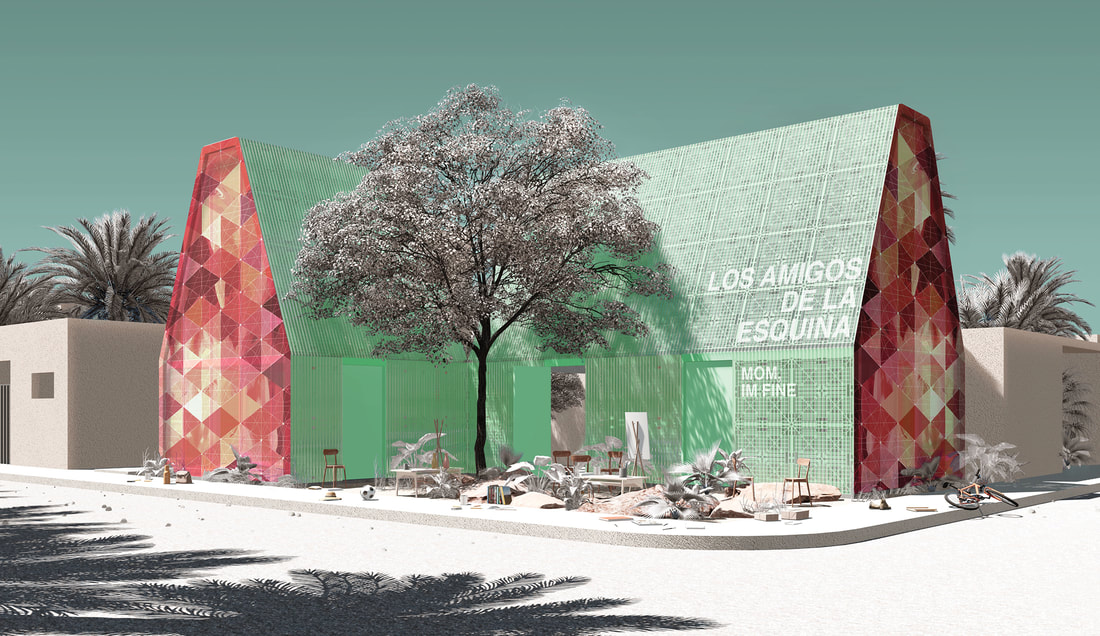tulum plastic school
1ST PRIZE
[DANIEL GARCÍA, WILLIAM SMITH]
SAN FRANCISCO, CA, usa
Of the 6.3 billion metric tons of plastic waste created historically as of 2015, only 9% has been successfully recycled. Of what remains, 12% has been incinerated into the air, and 79% has accumulated as landfill or spread as trash across oceans and landscapes. Compounding this problem, international manufacturing and low transportation prices have grown a massive global waste trade industry. Plastic waste is dispatched from the world’s largest economies and makes its way to countries with lax regulations where it has devastating effects on public health and the environment. Despite local attempts at recycling, the problem of plastic waste is global in scale.
How can the Tulum Plastic School address the international state of plastic in a single locale? Using LADLE’s educational goals as a motivation for design, how can the school communicate about this global problem through its materiality in a way that is understandable to both children and the world at large?
With these questions in mind, this proposal invokes an easily recognizable symbol of our global exchanges: the international plastic pallet. Its life cycle spent in transit, the pallet is put to use shipping other plastics around the globe. As a structural object and as a literal representation of waste trade, the project’s use of the pallet avoids common tendencies to aestheticize plastic waste itself. Rather than producing an amalgamated form made from waste or a highly refined construction product made from recycled content, we choose to approximate between these two extremes.
Set as the underlying structural order of the building, the quotidian pallet is elevated to an architectonic level, its engineered porosity filtering light into the school’s lofted interior. The pallet is threaded through its forklift channels onto a repeating bay system and grouped to form two gabled structures that pivot around a pair of courtyards: one can be seen as an extension of the classroom, the other is offered to the community. Encased in clear, recyclable corrugated plastic, the building is protected from the elements while allowing daylight to filter in. Conversely, the structure becomes a beacon for the community at night. The form seeks to promote an architecture of multiplicities: domestic, industrial, traditional, and contemporary.
How can the Tulum Plastic School address the international state of plastic in a single locale? Using LADLE’s educational goals as a motivation for design, how can the school communicate about this global problem through its materiality in a way that is understandable to both children and the world at large?
With these questions in mind, this proposal invokes an easily recognizable symbol of our global exchanges: the international plastic pallet. Its life cycle spent in transit, the pallet is put to use shipping other plastics around the globe. As a structural object and as a literal representation of waste trade, the project’s use of the pallet avoids common tendencies to aestheticize plastic waste itself. Rather than producing an amalgamated form made from waste or a highly refined construction product made from recycled content, we choose to approximate between these two extremes.
Set as the underlying structural order of the building, the quotidian pallet is elevated to an architectonic level, its engineered porosity filtering light into the school’s lofted interior. The pallet is threaded through its forklift channels onto a repeating bay system and grouped to form two gabled structures that pivot around a pair of courtyards: one can be seen as an extension of the classroom, the other is offered to the community. Encased in clear, recyclable corrugated plastic, the building is protected from the elements while allowing daylight to filter in. Conversely, the structure becomes a beacon for the community at night. The form seeks to promote an architecture of multiplicities: domestic, industrial, traditional, and contemporary.






